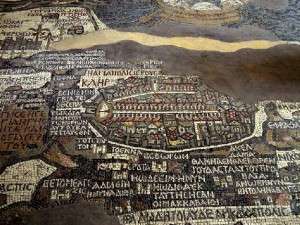Tomb of Akbar’s Mausoleum, Agra India
Akbar was one of the greatest emperors of the Mughal Empire (1526-1707). To construct a tomb in one’s lifetime was one of the most famous traditions in that era. Therefore, Akbar started the construction of this beautiful monument combining Christian, Islamic, Buddhist and Hindu themes. The decoration of the main gateway is impressively audacious and has mosaic patterns set into it. The tall towers are made of red sandstone and ornamented with white marble polygonal patterns. Inside the Mausoleum is the main tomb that embeds incomparable mosaic designs. The mosaics of glazed tiles and colored stones create geometric and calligraphic designs. The inscriptions are written and designed by Abd al-Haqq Shirazi. This mosaic monument artwork is achieved with square and rectangle pieces of colored stones gathered together to make patterns. Akbar’s tomb is one of the world’s greatest stone and mosaic art.
Maison Cassiette, Chartres France
Raymond Isodore is the owner of this house and the artist behind this magnificent mosaic artwork. He began to build his house in 1930 and it wasn’t until 1938 that he decided to decorate it with beautiful mosaic designs and patterns. He was taking a walk in the fields and noticed the flickering colors of tiny pieces of glass mosaic tiles, porcelain and crockery. It is what triggered his admiration to mosaics. He started to ornament the interior of his house tiling every surface with crockery and broken mosaic glass including the walls, the ceilings, the floors and even the furniture. After that, he began working on the exterior of the house. He built a chapel and a throne. His mosaic designs include Christian mosaics, animal mosaics and mosaic reproductions of paintings. One of his most famous works is the mosaic mural “La Grande Rosace” with geometric designs and floral patterns.
The Madaba Plateau, Jordan

Madaba is one of the oldest towns mentioned in the Bible and an essential town during the Christian era. The northern part of the city seemed to be the region with the biggest concentration of mosaics. The first mosaics discovered were while constructing new buildings. Most of the mosaic art pieces date between the 1st century and 8th century AD. Most of the mosaics were used in buildings to decorate walls, floors and ceilings. The beautiful swan mosaic was used as a mosaic mural and is now in a mosaic museum in Madaba Jordan. Animal mosaics were forbidden during the beginning of the 8th century and that is why they are badly preserved. Christian mosaics, also known as church mosaics, were the most important and depicted stories from the Bible. The most known mosaic in Madaba is the mosaic map of the Holy land, preserved in the floor of the Greek Orthodox church of Saint George. It dates from the 6th century and represents the Near East from Lebanon to the Nile Delta and from the Mediterranean to the eastern desert of Jordan. This mosaic artwork didn’t only decorate the church but also guided pilgrims that wanted to move from one holy site to another. The mosaic monument Madaba is now known to be the “City of Mosaics”.
Villa Romana Del Casale, Sicily Italy
The Villa Romana Del Casale is a Roman villa constructed during the 4th century in Sicily, Southern Italy. It has the most famous, richest and biggest roman and byzantine mosaics in the world. During an excavation in the 19th century, pieces of mosaic art and columns were found. These ancient mosaics mostly decorate the floors of the house. The first mosaic represents different figures of the Roman Empire ornamented with geometric mosaic patterns. It was located in one of the bedrooms of the villa. The most famous mosaic piece is “Bikini Girls” excavated from the floor. The mosaic artwork shows young women performing sports. Mosaics were installed to amuse the host and impress the guests of the house.
The Great Pavement, London England
The Great Pavement was built in the 13th century by order of Henry III and is located in front of the High Altar of Westminster Abbey. This mosaic artwork is one of its kind and belongs to a type of tiled stone art known as Cosmati work. It differs from the usual ancient and roman mosaics, consisting of square stones of equal sizes. It is of abstract design and geometrical patterns made from pieces of stone of different colors and sizes hand cut into shapes: rectangles, squares, triangles and circles. A mixture of both glass and marble mosaic tiles are used. This mosaic rug is distinctive on a design and workmanship level.












